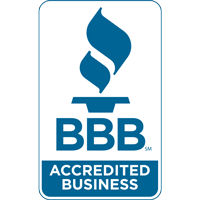These days, homes are well sealed and insulated. While this improves energy efficiency, too little fresh air, indoor contaminants and nonstop recirculation can cause problems.
You can rest easy, though, since Stanford Heating & Cooling can help you have an energy-efficient home that’s also comfortable. Our services include an air quality audit and products to help improve indoor air quality in Bloomfield, Indiana.
Give us a call today to begin improving your home’s indoor air.

Clues Your Home Has Poor Indoor Air Quality
Is your home healthy? It might not be as fresh as you think. Pollution is often two to five times higher indoors versus outdoors, as reported by the U.S. Environmental Protection Agency.
Indoor air pollutants floating through your home’s air may induce headaches and allergy flareups. And mold and mildew can trigger a variety of health concerns.

Health Problems
While these types of symptoms may be caused by other issues, they can be evidence your home is struggling with indoor air quality (IAQ) problems. This is especially true if you feel normal again while you’re out of the house.
- Dry eyes, nose, throat or skin
- Headaches and sinus irritation
- Fatigue
- Allergies or asthma symptoms that are more severe than average
- Coughing and sneezing
- Dizziness or nausea
Environmental Problems
An outdated heating and cooling system will sometimes be contributing to indoor air quality problems, particularly if it’s unable to filter air, regulate humidity or keep temperatures stable.
Here are a few other signs you may need to refresh your indoor air:
- Too much static or mold growth
- High quantities of dust
- Stale or musty odors

How Can I Avoid Indoor Air Quality Problems?

Avoiding indoor air quality problems is relatively simple with just 10 simple tips:
- Plan an indoor air quality audit with Stanford Heating & Cooling. We’ll examine areas that influence air quality, such as humidity, carbon monoxide and volatile organic compounds (VOCs). Then we’ll go over whatever problems we uncover and how you can resolve them.
- Clean on a regular basis to reduce dust mites, which can aggravate allergies and asthma.
- Do what you can to get rid of secondhand smoke.
- Use a whole-home filtration system to eliminate odors, rather than hiding them with air fresheners or fragrant candles. The pollution includes chemicals that can trigger headaches or upset respiratory illness.
- Vent gas-burning appliances, like stoves and water heaters, to the outdoors.
- Keep your home’s humidity levels balanced with a humidifier or dehumidifier, depending on your needs. Put humidity under 50% to restrict mold and mildew spores.
- Assess your home for radon. Long-term exposure to this invisible radioactive gas is the number one cause of lung cancer amongst nonsmokers, as reported by the EPA. You can buy a radon test kit online or get in contact with your state radon program for details on discounted or free kits.
- Use a ventilation system to replenish contaminated indoor air with fresh outside air.
- Choose natural cleaning and painting supplies that are low in or free of VOCs. Elevated levels of VOCs can worsen symptoms for family members with respiratory diseases.
- Mount carbon monoxide detectors near bedrooms.
Start Breathing Healthier Air Today with Stanford Heating & Cooling
With a full team of professionals and indoor air quality solutions, Stanford Heating & Cooling can help your family breathe easy. Call us or contact us online today to begin.

